Restoring Mexican Tropical Dry Forests: A National Review
Abstract
1. Introduction
2. Materials and Methods
2.1. Study Regions
2.2. Protocol for Literature Review
2.3. Characterization of the TDF Ecoregions in Mexico
2.4. Map of the Restoration Locations
2.5. Data Analysis
3. Results
3.1. Overview of Restoration Studies in Mexico
3.2. Under Which Conditions Does Restoration Occur in Mexico?
3.3. Response Variables
3.4. Drivers of Restoration Success
4. Discussion
4.1. Trends of Restoration Success
4.2. Are Current Restoration Initiatives Enough?
4.3. Ecological Restoration Needs Society
4.4. Implications and Future Direction
5. Conclusions
Supplementary Materials
Author Contributions
Funding
Institutional Review Board Statement
Informed Consent Statement
Data Availability Statement
Acknowledgments
Conflicts of Interest
References
- Blackie, R.; Baldauf, C.; Gautier, D.; Gumbo, D.; Kassa, H.; Parthasarathy, N.; Paumgarten, F.; Sola, P.; Pulla, S.; Waeber, P. Tropical Dry Forests: The State of Global Knowledge and Recommendations for Future Research; Cifor: Bogor, Indonesia, 2014; Volume 2. [Google Scholar]
- Banda, K.; Delgado-Salinas, A.; Dexter, K.G.; Linares-Palomino, R.; Oliveira-Filho, A.; Prado, D.; Pullan, M.; Quintana, C.; Riina, R.; Rodríguez, G.M. Plant Diversity Patterns in Neotropical Dry Forests and Their Conservation Implications. Science 2016, 353, 1383–1387. [Google Scholar]
- Campo, J.; Merino, A. Variations in Soil Carbon Sequestration and Their Determinants along a Precipitation Gradient in Seasonally Dry Tropical Forest Ecosystems. Glob Change Biol. 2016, 22, 1942–1956. [Google Scholar] [CrossRef] [PubMed]
- Saynes, V.; Hidalgo, C.; Etchevers, J.D.; Campo, J.E. Soil C and N Dynamics in Primary and Secondary Seasonally Dry Tropical Forests in Mexico. Appl. Soil Ecol. 2005, 29, 282–289. [Google Scholar] [CrossRef]
- Maass, M.; Ahedo-Hernández, R.; Araiza, S.; Verduzco, A.; Martínez-Yrízar, A.; Jaramillo, V.J.; Parker, G.; Pascual, F.; García-Méndez, G.; Sarukhán, J. Long-Term (33 Years) Rainfall and Runoff Dynamics in a Tropical Dry Forest Ecosystem in Western Mexico: Management Implications under Extreme Hydrometeorological Events. For. Ecol. Manag. 2018, 426, 7–17. [Google Scholar] [CrossRef]
- Andrade, E.M.; Guerreiro, M.J.S.; Palácio, H.A.Q.; Campos, D.A. Ecohydrology in a Brazilian Tropical Dry Forest: Thinned Vegetation Impact on Hydrological Functions and Ecosystem Services. J. Hydrol. Reg. Stud. 2020, 27, 100649. [Google Scholar] [CrossRef]
- Dupuy, J.M.; Hernández-Stefanoni, J.L.; Hernández-Juárez, R.A.; Tetetla-Rangel, E.; López-Martínez, J.O.; Leyequién-Abarca, E.; Tun-Dzul, F.J.; May-Pat, F. Patterns and Correlates of Tropical Dry Forest Structure and Composition in a Highly Replicated Chronosequence in Yucatan, Mexico: Tropical Dry Forest Structure and Composition. Biotropica 2012, 44, 151–162. [Google Scholar] [CrossRef]
- Mesa-Sierra, N.; Laborde, J.; Escobar, F. Seasonally Dry Tropical Forests of the Gulf of Mexico: A Degraded Landscape Undergoing Homogenization or a Promising, Resilient Reservoir? Acta Oecologica 2020, 106, 103583. [Google Scholar] [CrossRef]
- Newton, A.C.; del Castillo, R.F.; Echeverría, C.; Geneletti, D.; González-Espinosa, M.; Malizia, L.R.; Premoli, A.C.; Rey Benayas, J.M.; Smith-Ramírez, C.; Williams-Linera, G. Forest Landscape Restoration in the Drylands of Latin America. Ecol. Soc. 2012, 17, art21. [Google Scholar] [CrossRef]
- Griscom, H.P.; Ashton, M.S. Restoration of Dry Tropical Forests in Central America: A Review of Pattern and Process. For. Ecol. Manag. 2011, 261, 1564–1579. [Google Scholar] [CrossRef]
- Olson, D.M.; Dinerstein, E.; Wikramanayake, E.D.; Burgess, N.D.; Powell, G.V.N.; Underwood, E.C.; D’amico, J.A.; Itoua, I.; Strand, H.E.; Morrison, J.C.; et al. Terrestrial Ecoregions of the World: A New Map of Life on Earth. BioScience 2001, 51, 933. [Google Scholar] [CrossRef]
- Lott, E.J.; Atkinson, T.H. Mexican and Central American Seasonally Dry Tropical Forests: Chamela-Cuixmala, Jalisco, as a Focal Point for Comparison. In Neotropical Savannas and Seasonally Dry Forests; CRC Press: Boca Raton, FL, USA, 2006; pp. 315–342. [Google Scholar]
- Sosa, V.; De-Nova, J.A.; Vásquez-Cruz, M. Evolutionary History of the Flora of Mexico: Dry Forests Cradles and Museums of Endemism: Evolutionary History of the Flora of Mexico. J. Syst. Evol. 2018, 56, 523–536. [Google Scholar] [CrossRef]
- Trejo, I.; Dirzo, R. Floristic Diversity of Mexican Seasonally Dry Tropical Forest. Biodivers. Conserv. 2002, 11, 2063–2084. [Google Scholar] [CrossRef]
- Bonilla-Moheno, M.; Redo, D.J.; Aide, T.M.; Clark, M.L.; Grau, H.R. Vegetation Change and Land Tenure in Mexico: A Country-Wide Analysis. Land Use Policy 2013, 30, 355–364. [Google Scholar] [CrossRef]
- Bonilla-Moheno, M.; Holl, K.D. Direct Seeding to Restore Tropical Mature-Forest Species in Areas of Slash-and-Burn Agriculture. Restor. Ecol. 2010, 18, 438–445. [Google Scholar] [CrossRef]
- Sluyter, A. The Making of the Myth in Postcolonial Development: Material-Conceptual Landscape Transformation in Sixteenth-Century Veracruz. Ann. Assoc. Am. Geogr. 1999, 89, 377–401. [Google Scholar] [CrossRef]
- Ceccon, E.; Sánchez, S.; Campo, J. Tree Seedling Dynamics in Two Abandoned Tropical Dry Forests of Differing Successional Status in Yucatán, Mexico: A Field Experiment with N and P Fertilization. Plant Ecol. 2004, 170, 277–285. [Google Scholar] [CrossRef]
- de la Peña-Domene, M.; Rodriguez Tapia, G.; Mesa-Sierra, N.; Rivero-Villar, A.; Giardina, C.P.; Campo, J. Relationships between Satellite-Derived Vegetation Index (NDVI) and Climate in Tropical Dry Forests: A Pantropical Analysis. Glob. Ecol. Biogeogr. (Under Review).
- Cartus, O.; Kellndorfer, J.; Walker, W.; Franco, C.; Bishop, J.; Santos, L.; Fuentes, J. A National, Detailed Map of Forest Aboveground Carbon Stocks in Mexico. Remote Sens. 2014, 6, 5559–5588. [Google Scholar] [CrossRef]
- Koleff, P.; Tambutti, M.; March, I.; Esquivel, R.; Cantú, C.; Lira-Noriega, A.; Aguilar, V.; Alarcón, J.; Bezaury-Creel, J.; Blanco, S. Identificación de Prioridades y Análisis de Vacíos y Omisiones En La Conservación de La Biodiversidad de México. Cap. Nat. De México 2009, 2, 651–718. [Google Scholar]
- López-Barrera, F.; Martínez-Garza, C.; Ceccon, E. Ecología de la restauración en México: Estado actual y perspectivas. Rev. Mex. De Biodivers. 2017, 88, 97–112. [Google Scholar] [CrossRef]
- Gavito, M.E.; Sandoval-Pérez, A.L.; del Castillo, K.; Cohen-Salgado, D.; Colarte-Avilés, M.E.; Mora, F.; Santibáñez-Rentería, A.; Siddique, I.; Urquijo-Ramos, C. Resilience of Soil Nutrient Availability and Organic Matter Decomposition to Hurricane Impact in a Tropical Dry Forest Ecosystem. For. Ecol. Manag. 2018, 426, 81–90. [Google Scholar] [CrossRef]
- Griscom, H.P. The Long-Term Effects of Active Management and Landscape Characteristics on Carbon Accumulation and Diversity within a Seasonal Dry Tropical Ecosystem. For. Ecol. Manag. 2020, 473, 118296. [Google Scholar] [CrossRef]
- Bollo Manent, M.; Hernández Santana, J.; Méndez Linares, A. The State of the Environment in Mexico. Open Geosci. 2014, 6, 219–228. [Google Scholar] [CrossRef]
- Mesa-Sierra, N.; Laborde, J. Insights for the Conservation of Native Tree Species Gleaned from the Advance Regeneration Community in a Seasonally Dry Tropical Landscape. Trop. Conserv. Sci. 2017, 10, 194008291771422. [Google Scholar] [CrossRef]
- Dendy, J.; Cordell, S.; Giardina, C.P.; Hwang, B.; Polloi, E.; Rengulbai, K. The Role of Remnant Forest Patches for Habitat Restoration in Degraded Areas of Palau: Forest Patches for Restoration in Palau. Restor. Ecol. 2015, 23, 872–881. [Google Scholar] [CrossRef]
- Ferguson, B.G.; Vandermeer, J.; Morales, H.; Griffith, D.M. Post-Agricultural Succession in El Peten, Guatemala. Conserv. Biol. 2003, 17, 818–828. [Google Scholar] [CrossRef]
- Hooper, E.R. Factors Affecting the Species Richness and Composition of Neotropical Secondary Succession: A Case Study of Abandoned Agricultural Land in Panama. In Post-Agricultural Succession in the Neotropics; Springer: New York, NY, USA, 2008; pp. 141–164. ISBN 978-0-387-33641-1. [Google Scholar]
- Sampaio, A.B.; Holl, K.D.; Scariot, A. Does Restoration Enhance Regeneration of Seasonal Deciduous Forests in Pastures in Central Brazil? Restor. Ecol. 2007, 15, 462–471. [Google Scholar] [CrossRef]
- Martínez-Garza, C.; Osorio-Beristain, M.; Alcalá-Martínez, R.E.; Valenzuela-Galván, D.; Mariano, N. Ocho Años de Restauración Experimental En Las Selvas Estacionales de México. In Experiencias Mexicanas En La Restauración de Los Ecosistemas; Comisión Nacional para el Conocimiento y Uso de la Biodiversidad: Mexico City, Mexico, 2016; pp. 385–406. [Google Scholar]
- Sánchez-Azofeifa, G.A.; Quesada, M.; Rodriguez, J.P.; Nassar, J.M.; Stoner, K.E.; Castillo, A.; Garvin, T.; Zent, E.L.; Calvo-Alvarado, J.C.; Kalacska, M.E.R.; et al. Research Priorities for Neotropical Dry Forests. Biotropica 2005, 37, 477–485. [Google Scholar] [CrossRef]
- Castillo-Campos, G.; Halffter, G.; Moreno, C.E. Primary and Secondary Vegetation Patches as Contributors to Floristic Diversity in a Tropical Deciduous Forest Landscape. Biodivers Conserv. 2008, 17, 1701–1714. [Google Scholar] [CrossRef]
- Dirzo, R.; Young, H.S.; Mooney, H.A.; Ceballos, G. Seasonally Dry Tropical Forests: Ecology and Conservation; Dirzo, R., Ed.; Island Press: Washington, DC, USA, 2011; ISBN 1-59726-704-X. [Google Scholar]
- Pérez-García, E.A.; Meave, J.; Gallardo, C. Vegetación y flora de la región de Nizanda, Istmo de Tehuantepec, Oaxaca, México. Acta Bot. Mex. 2001, 56, 19–88. [Google Scholar] [CrossRef]
- Ibarra-Manríquez, G.; Villaseñor, J.L.; Durán-García, R. Riqueza de especies y endemismo del componente arbóreo de la Península de Yucatán, México. Bot. Sci. 2017, 57, 49–77. [Google Scholar] [CrossRef][Green Version]
- López-Martínez, J.O.; Sanaphre-Villanueva, L.; Dupuy, J.M.; Hernández-Stefanoni, J.L.; Meave, J.A.; Gallardo-Cruz, J.A. β-Diversity of Functional Groups of Woody Plants in a Tropical Dry Forest in Yucatan. PLoS ONE 2013, 8, e73660. [Google Scholar] [CrossRef] [PubMed]
- Dorado, O.; Maldonado, B.; Arias, D.M.; Sorani, V.; Ramírez, R.; Leyva, E. Programa de Conservación y Manejo Reserva de La Biosfera Sierra de Huautla, México; CONANP: Mexico City, Mexico, 2005. [Google Scholar]
- Travieso-Bello, A.C.; Campos, A. Los Componentes Del Paisaje. In Entornos Veracruzanos: La Costa de La Mancha; Instituto de Ecología: Xalapa, Mexico, 2006; pp. 245–280. [Google Scholar]
- Stadler, S.J. Aridity Indexes. In Encyclopedia of World Climatology; Olivers, J.E., Ed.; Springer: Boston, MA, USA, 1987; pp. 102–107. [Google Scholar]
- INEGI Instituto Nacional de Estadística y Geografía. Available online: http://www.inegi.org.mx/ (accessed on 1 February 2020).
- CONABIO Sistema Nacional de Información Sobre Biodiversidad. Available online: http://geoportal.conabio.gob.mx (accessed on 1 February 2021).
- Gann, G.D.; McDonald, T.; Walder, B.; Aronson, J.; Nelson, C.R.; Jonson, J.; Hallett, J.G.; Eisenberg, C.; Guariguata, M.R.; Liu, J.; et al. International Principles and Standards for the Practice of Ecological Restoration. Restor. Ecol. 2019, 27, S1–S46. [Google Scholar] [CrossRef]
- R Development Core Team. R: A Language and Environment for Statistical Computing. R Development Core Team: Vienna, Austria, 2019. [Google Scholar]
- Martínez-Garza, C.; Méndez-Toribio, M.; Ceccon, E.; Guariguata, M.R. Ecosystem Restoration in Mexico: Insights on the Project Planning Phase. Bot. Sci. 2021, 99, 242–256. [Google Scholar] [CrossRef]
- Méndez-Toribio, M.; Martínez-Garza, C.; Ceccon, E.; Guariguata, M.R. La Restauración de Ecosistemas Terrestres en México: Estado actual, Necesidades y Oportunidades; Center for International Forestry Research (CIFOR): Bogor, Indonesia, 2018; ISBN 978-602-387-074-5. [Google Scholar]
- Dimson, M.; Gillespie, T.W. Trends in Active Restoration of Tropical Dry Forest: Methods, Metrics, and Outcomes. For. Ecol. Manag. 2020, 467, 118150. [Google Scholar] [CrossRef]
- González-Tokman, D.M.; Barradas, V.L.; Boege, K.; Domínguez, C.A.; del-Val, E.; Saucedo, E.; Martínez-Garza, C. Performance of 11 Tree Species under Different Management Treatments in Restoration Plantings in a Tropical Dry Forest: Tree Performance in a Tropical Dry Forest. Restor. Ecol. 2018, 26, 642–649. [Google Scholar] [CrossRef]
- Alvarez-Aquino, C.; Williams-Linera, G. Seedling Survival and Growth of Tree Species: Site Condition and Seasonality in Tropical Dry Forest Restoration. Bot. Sci. 2012, 90, 313. [Google Scholar] [CrossRef]
- Bhadouria, R.; Singh, R.; Srivastava, P.; Tripathi, S.; Raghubanshi, A.S. Interactive Effect of Water and Nutrient on Survival and Growth of Tree Seedlings of Four Dry Tropical Tree Species under Grass Competition. Trop. Ecol. 2017, 58, 611–621. [Google Scholar]
- Griscom, H.P.; Ashton, P.M.S.; Berlyn, G.P. Seedling Survival and Growth of Native Tree Species in Pastures: Implications for Dry Tropical Forest Rehabilitation in Central Panama. For. Ecol. Manag. 2005, 218, 306–318. [Google Scholar] [CrossRef]
- Cabin, R.J.; Weller, S.G.; Lorence, D.H.; Cordell, S.; Hadway, L.J. Effects of Microsite, Water, Weeding, and Direct Seeding on the Regeneration of Native and Alien Species within a Hawaiian Dry Forest Preserve. Biol. Conserv. 2002, 104, 181–190. [Google Scholar] [CrossRef]
- de Souza Gomes Guarino, E.; Scariot, A. Direct Seeding of Dry Forest Tree Species in Abandoned Pastures: Effects of Grass Canopy and Seed Burial on Germination. Ecol. Res. 2014, 29, 473–482. [Google Scholar] [CrossRef]
- Garen, E.J.; Saltonstall, K.; Ashton, M.S.; Slusser, J.L.; Mathias, S.; Hall, J.S. The Tree Planting and Protecting Culture of Cattle Ranchers and Small-Scale Agriculturalists in Rural Panama: Opportunities for Reforestation and Land Restoration. For. Ecol. Manag. 2011, 261, 1684–1695. [Google Scholar] [CrossRef]
- Schulz, K.; Guschal, M.; Kowarik, I.; Almeida-Cortez, J.S.; Sampaio, E.V.S.B.; Cierjacks, A. Grazing, Forest Density, and Carbon Storage: Towards a More Sustainable Land Use in Caatinga Dry Forests of Brazil. Reg. Environ. Change 2018, 18, 1969–1981. [Google Scholar] [CrossRef]
- Schmitt-Harsh, M.; Evans, T.P.; Castellanos, E.; Randolph, J.C. Carbon Stocks in Coffee Agroforests and Mixed Dry Tropical Forests in the Western Highlands of Guatemala. Agroforest Syst. 2012, 86, 141–157. [Google Scholar] [CrossRef]
- Leverkus, A.B.; Lázaro González, A.; Andivia, E.; Castro, J.; Jiménez, M.N.; Navarro, F.B. Seeding or Planting to Revegetate the World’s Degraded Land: Systematic Review and Experimentation to Address Methodological Issues. Restor. Ecol. 2021, 29, e13372. [Google Scholar] [CrossRef]
- Schulz, K.; Guschal, M.; Kowarik, I.; Silva de Almeida-Cortez, J.; Valadares de Sá Barreto Sampaio, E.; Cierjacks, A. Grazing Reduces Plant Species Diversity of Caatinga Dry Forests in Northeastern Brazil. Appl. Veg. Sci. 2019, 22, 348–359. [Google Scholar] [CrossRef]
- López-Barrera, F.; Manson, R.H.; Landgrave, R. Identifying Deforestation Attractors and Patterns of Fragmentation for Seasonally Dry Tropical Forest in Central Veracruz, Mexico. Land Use Policy 2014, 41, 274–283. [Google Scholar] [CrossRef]
- Ceccon, E.; Martínez-Garza, C. La Complejidad Socioecológica de la Restauración en México. In Experiencias Mexicanas en la Restauración de Los Ecosistemas; Comisión Nacional para el Conocimiento y Uso de la Biodiversidad: Mexico City, Mexico, 2016; ISBN 978-607-02-9477-8. [Google Scholar]
- Stefanakis, A.I.; Calheiros, C.S.C.; Nikolaou, I. Nature-Based Solutions as a Tool in the New Circular Economic Model for Climate Change Adaptation. Circ. Econ. Sust. 2021, 1, 303–318. [Google Scholar] [CrossRef]
- Vale, M.M.; Arias, P.A.; Ortega, G.; Cardoso, M.; Oliveira, B.F.; Loyola, R.; Scarano, F.R. Climate Change and Biodiversity in the Atlantic Forest: Best Climatic Models, Predicted Changes and Impacts, and Adaptation Options. In The Atlantic Forest; Springer: Berlin, Germany, 2021; pp. 253–267. [Google Scholar]
- Salinas-Peba, L.; Parra-Tabla, V.; Campo, J.; Munguia-Rosas, M.A. Survival and Growth of Dominant Tree Seedlings in Seasonally Tropical Dry Forests of Yucatan: Site and Fertilization Effects. J. Plant Ecol. 2014, 7, 470–479. [Google Scholar] [CrossRef][Green Version]
- Sánchez-Velásquez, L.R.; Quintero-Gradilla, S.; Aragón-Cruz, F.; Pineda-López, M.R. Nurses for Brosimum Alicastrum Reintroduction in Secondary Tropical Dry Forest. For. Ecol. Manag. 2004, 198, 401–404. [Google Scholar] [CrossRef]
- Allen, M.F.; Allen, E.B.; Gomez-Pompa, A. Effects of Mycorrhizae and Nontarget Organisms on Restoration of a Seasonal Tropical Forest in Quintana Roo, Mexico: Factors Limiting Tree Establishment. Restor. Ecol. 2005, 13, 325–333. [Google Scholar] [CrossRef]
- Barajas-Guzmán, M.G.; Barradas, V.L. Costs and Benefits of the Use of Mulches in Deciduous Tropical Reforestation. Bot. Sci. 2013, 91, 363–370. [Google Scholar] [CrossRef]
- Nuñez-Cruz, A.; Bonfil, C. Initial Establishment of Three Species of Tropical Dry Forest in a Degraded Pasute: Effects of Adding Mulch and Compost. Agrociencia 2013, 47, 609–620. [Google Scholar]
- Castro, J.; Morales-Rueda, F.; Navarro, F.B.; Löf, M.; Vacchiano, G.; Alcaraz-Segura, D. Precision Restoration: A Necessary Approach to Foster Forest Recovery in the 21st Century. Restor. Ecol. 2021, 29, e13421. [Google Scholar] [CrossRef]
- Barajas-Guzmán, M.G.; Barradas, L.V. Microclimate and Sapling Survival under Organic and Polyethylene Mulch in a Tropical Dry Deciduous Forest. Bot. Sci. 2011, 88, 27. [Google Scholar] [CrossRef][Green Version]
- Luna-Nieves, A.L.; Meave, J.A.; González, E.J.; Cortés-Flores, J.; Ibarra-Manríquez, G. Guiding Seed Source Selection for the Production of Tropical Dry Forest Trees: Coulteria Platyloba as Study Model. For. Ecol. Manag. 2019, 446, 105–114. [Google Scholar] [CrossRef]
- Carrasco-Carballido, V.; Martínez-Garza, C.; Jiménez-Hernández, H.; Márquez-Torres, F.; Campo, J. Effects of Initial Soil Properties on Three-Year Performance of Six Tree Species in Tropical Dry Forest Restoration Plantings. Forests 2019, 10, 428. [Google Scholar] [CrossRef]
- Bakhoum, N.; Fall, D.; Fall, F.; Diouf, F.; Hirsch, A.M.; Balachandar, D.; Diouf, D. Senegalia Senegal (Synonym: Acacia Senegal), Its Importance to Sub-Saharan Africa, and Its Relationship with a Wide Range of Symbiotic Soil Microorganisms. South Afr. J. Bot. 2018, 119, 362–368. [Google Scholar] [CrossRef]
- Sangsupan, H.A.; Hibbs, D.E.; Withrow-Robinson, B.A.; Elliott, S. Seed and Microsite Limitations of Large-Seeded, Zoochorous Trees in Tropical Forest Restoration Plantations in Northern Thailand. For. Ecol. Manag. 2018, 419–420, 91–100. [Google Scholar] [CrossRef]
- Cabin, R.J.; Weller, S.G.; Lorence, D.H.; Flynn, T.W.; Sakai, A.K.; Sandquist, D.; Hadway, L.J. Effects of Long-Term Ungulate Exclusion and Recent Alien Species Control on the Preservation and Restoration of a Hawaiian Tropical Dry Forest. Conserv. Biol. 2000, 14, 439–453. [Google Scholar] [CrossRef]
- Thaxton, J.M.; Cole, T.C.; Cordell, S.; Cabin, R.J.; Sandquist, D.R.; Litton, C.M. Native Species Regeneration Following Ungulate Exclusion and Nonnative Grass Removal in a Remnant Hawaiian Dry Forest. Pac. Sci. 2010, 64, 533–544. [Google Scholar] [CrossRef]
- Mesa-Sierra, N.; Laborde, J.; Guevara, S.; Sánchez-Ríos, G. Restauración Ecológica de La Selva Mediana Sub-Caducifolia En Un Potrero Abandonado En Veracruz: Las Perchas Funcionan; Simposio Mexicano de Restauración de Ecosistemas: Cuernavaca, México, 2014. [Google Scholar]
- Fagundes, M.; Weisser, W.; Ganade, G. The Role of Nurse Successional Stages on Species-Specific Facilitation in Drylands: Nurse Traits and Facilitation Skills. Ecol. Evol. 2018, 8, 5173–5184. [Google Scholar] [CrossRef] [PubMed]
- Messier, C.; Bauhus, J.; Sousa-Silva, R.; Auge, H.; Baeten, L.; Barsoum, N.; Bruelheide, H.; Caldwell, B.; Cavender-Bares, J.; Dhiedt, E.; et al. For the Sake of Resilience and Multifunctionality, Let’s Diversify Planted Forests! Conserv. Lett. 2021, 15, e12829. [Google Scholar] [CrossRef]
- Medeiros, A.S.; Goto, B.T.; Ganade, G. Ecological Restoration Methods Influence the Structure of Arbuscular Mycorrhizal Fungal Communities in Degraded Drylands. Pedobiologia 2021, 84, 150690. [Google Scholar] [CrossRef]
- Díaz-Triana, J.E.; Torres-Rodríguez, S.; Muñoz-P, L.; Avella, M.A. Monitoreo de la restauración ecológica en un bosque seco tropical interandino (Huila, Colombia): Programa y resultados preliminares. Caldasia 2019, 41, 60–77. [Google Scholar] [CrossRef]
- Buma, B.; Wessman, C.A. Differential Species Responses to Compounded Perturbations and Implications for Landscape Heterogeneity and Resilience. For. Ecol. Manag. 2012, 266, 25–33. [Google Scholar] [CrossRef]
- Tobón, W.; Urquiza-Haas, T.; Koleff, P.; Schröter, M.; Ortega-Álvarez, R.; Campo, J.; Lindig-Cisneros, R.; Sarukhán, J.; Bonn, A. Restoration Planning to Guide Aichi Targets in a Megadiverse Country: Restoration Planning. Conserv. Biol. 2017, 31, 1086–1097. [Google Scholar] [CrossRef] [PubMed]
- Orsi, F.; Geneletti, D. Identifying Priority Areas for Forest Landscape Restoration in Chiapas (Mexico): An Operational Approach Combining Ecological and Socioeconomic Criteria. Landsc. Urban Plan. 2010, 94, 20–30. [Google Scholar] [CrossRef]
- Geneletti, D.; Orsi, F.; Ianni, E.; Newton, A. 9 Identifying Priority Areas For Dryland Forest Restoration. In Principles and Practice of Forest Landscape Restoration: Case Studies from the Drylands of Latin America; IUCN: Grand, Switzerland, 2011; p. 273. [Google Scholar]
- Timpane-Padgham, B.L.; Beechie, T.; Klinger, T. A Systematic Review of Ecological Attributes That Confer Resilience to Climate Change in Environmental Restoration. PLoS ONE 2017, 12, e0173812. [Google Scholar] [CrossRef]
- Costa Rica Government. Sistema Nacional de Áreas de Conservación SINAC Estrategia Nacional de Restauración de Paisajes de Costa Rica (EN5-CR) 2021–2050/MINAE. 2021. [Google Scholar]
- Ospina Arango, O.L.; Vanegas Pinzón, S.; Escobar Niño, G.A.; Ramírez, W.; Sánchez, J.J. Plan Nacional de Restauración: Restauración Ecológica, Rehabilitación y Recuperación de Áreas Disturbadas; Ministerio de Ambiente y Desarrollo Sostenible: Bogotá, Colombia, 2015. [Google Scholar]
- García Cuevas, X.; Toledo Chiu, C.; Hernández Ramos, J.; Mendoza Muñoz, J.Á.; Ramos, A.H. Índice de Sitio Para Plantaciones Forestales Comerciales de Cedrela Odorata, L. En Quintana Roo, México. Revista mexicana de ciencias forestales 2021, 12, 92–114. [Google Scholar] [CrossRef]
- Brooks, S.; Cordell, S.; Perry, L. Broadcast Seeding as a Potential Tool to Reestablish Native Species in Degraded Dry Forest Ecosystems in Hawaii. Ecol. Restor. 2009, 27, 300–305. [Google Scholar] [CrossRef]
- Metzel, R.; Montagnini, F. From Farm to Forest: Factors Associated with Protecting and Planting Trees in a Panamanian Agricultural Landscape. Bois For. Trop. 2014, 322, 3. [Google Scholar] [CrossRef]
- Ceccon, E.; Méndez-Toribio, M.; Martínez-Garza, C. Social Participation in Forest Restoration Projects: Insights from a National Assessment in Mexico. Hum. Ecol. 2020, 48, 609–617. [Google Scholar] [CrossRef]
- Mazón, M.; Aguirre, N.; Echeverría, C.; Aronson, J. Monitoring Attributes for Ecological Restoration in Latin America and the Caribbean Region. Restor. Ecol. 2019, 27, 992–999. [Google Scholar] [CrossRef]
- Zafra-Calvo, N.; Balvanera, P.; Pascual, U.; Merçon, J.; Martín-López, B.; van Noordwijk, M.; Mwampamba, T.H.; Lele, S.; Ifejika Speranza, C.; Arias-Arévalo, P.; et al. Plural Valuation of Nature for Equity and Sustainability: Insights from the Global South. Glob. Environ. Change 2020, 63, 102115. [Google Scholar] [CrossRef]
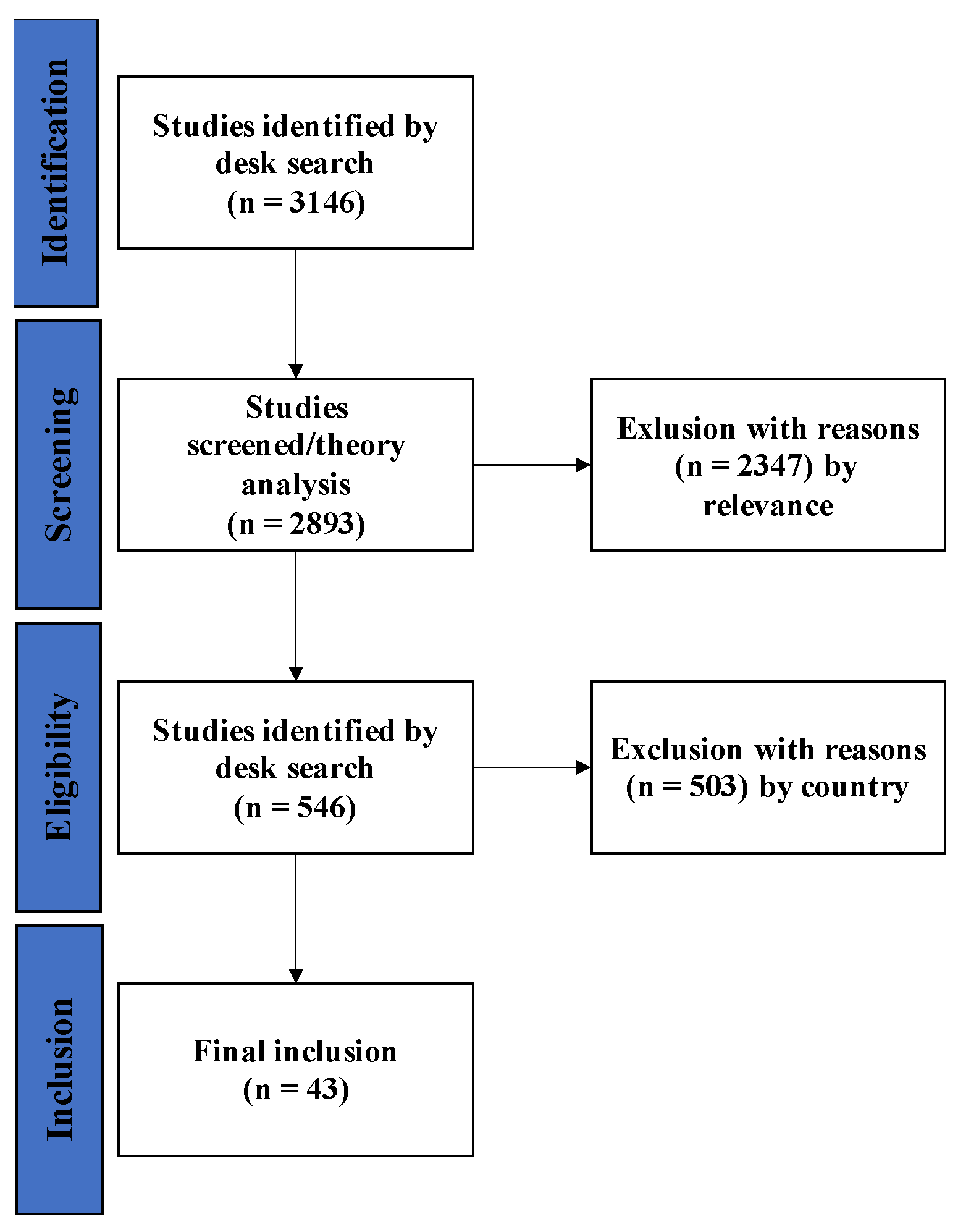
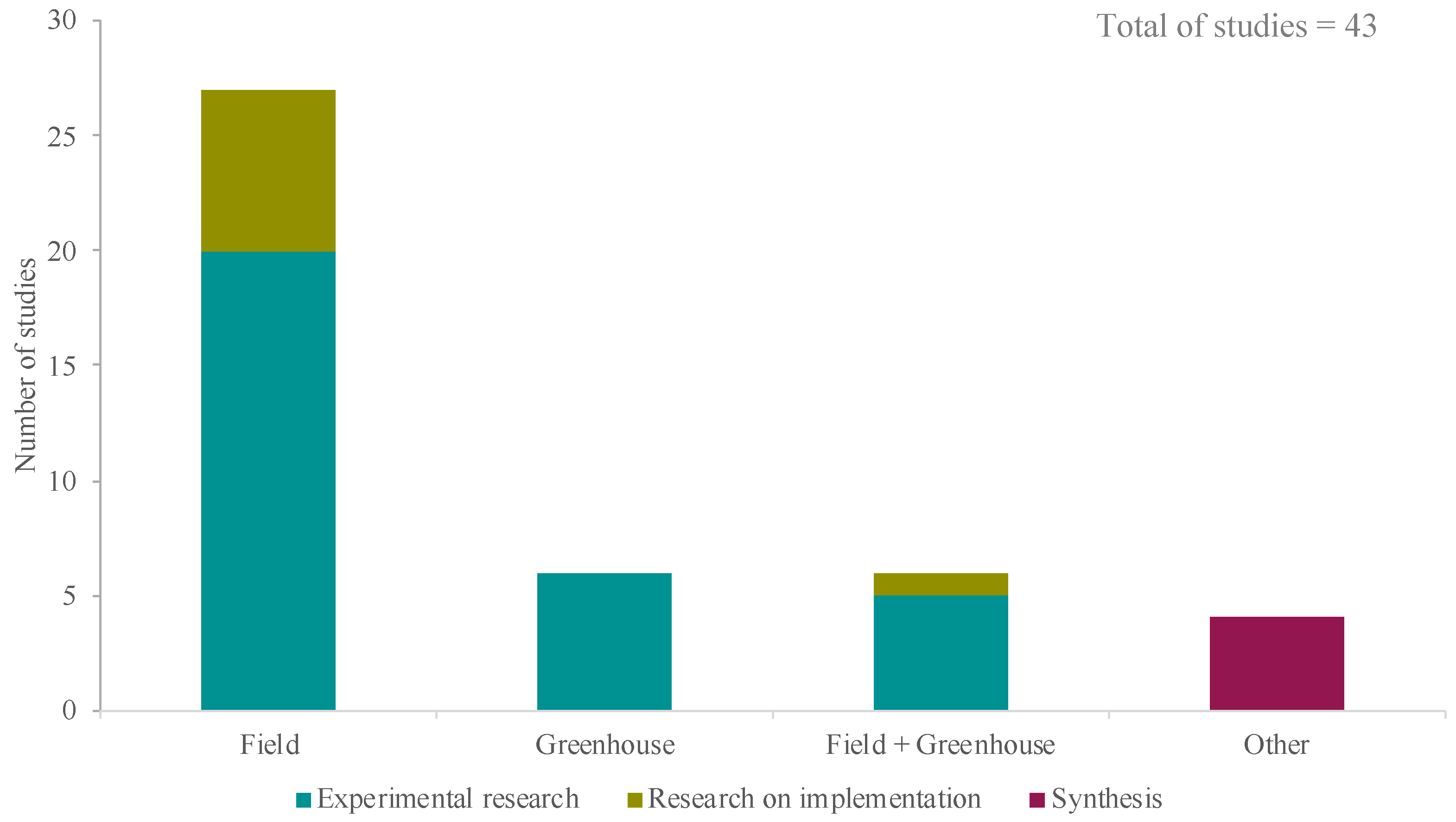

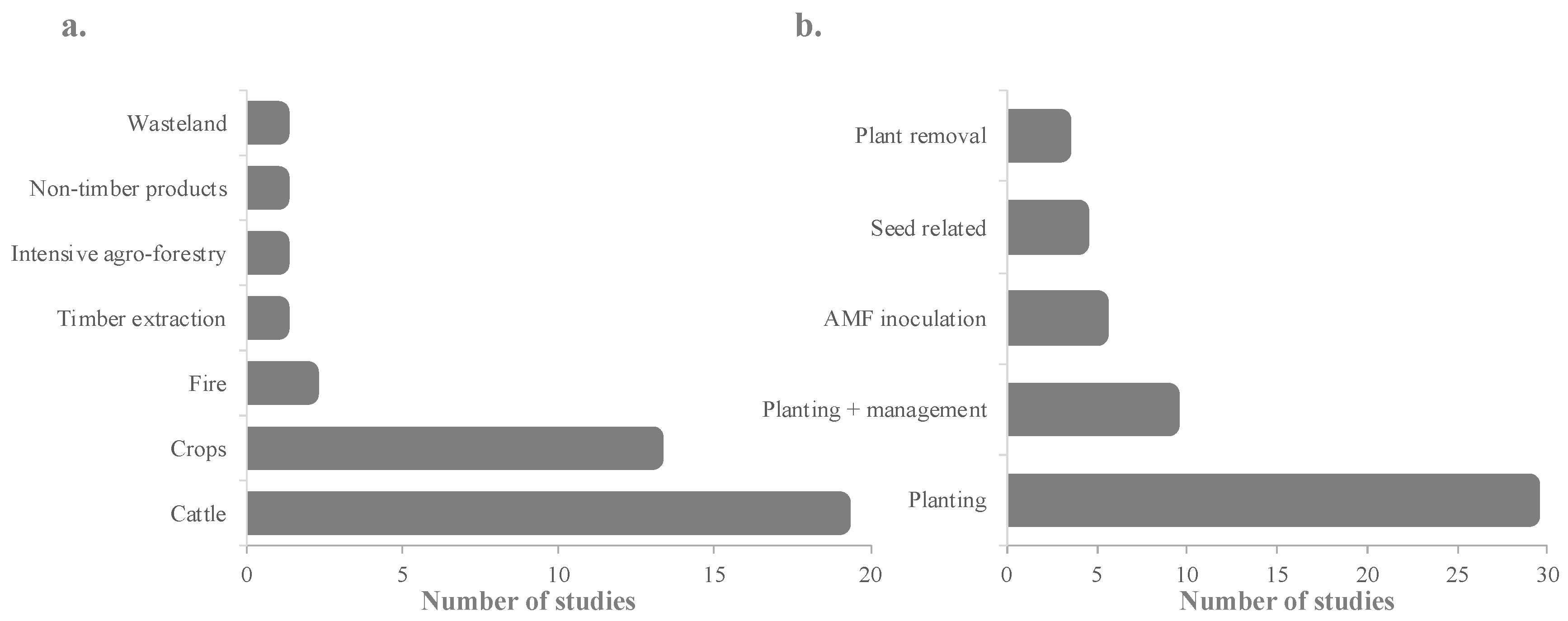
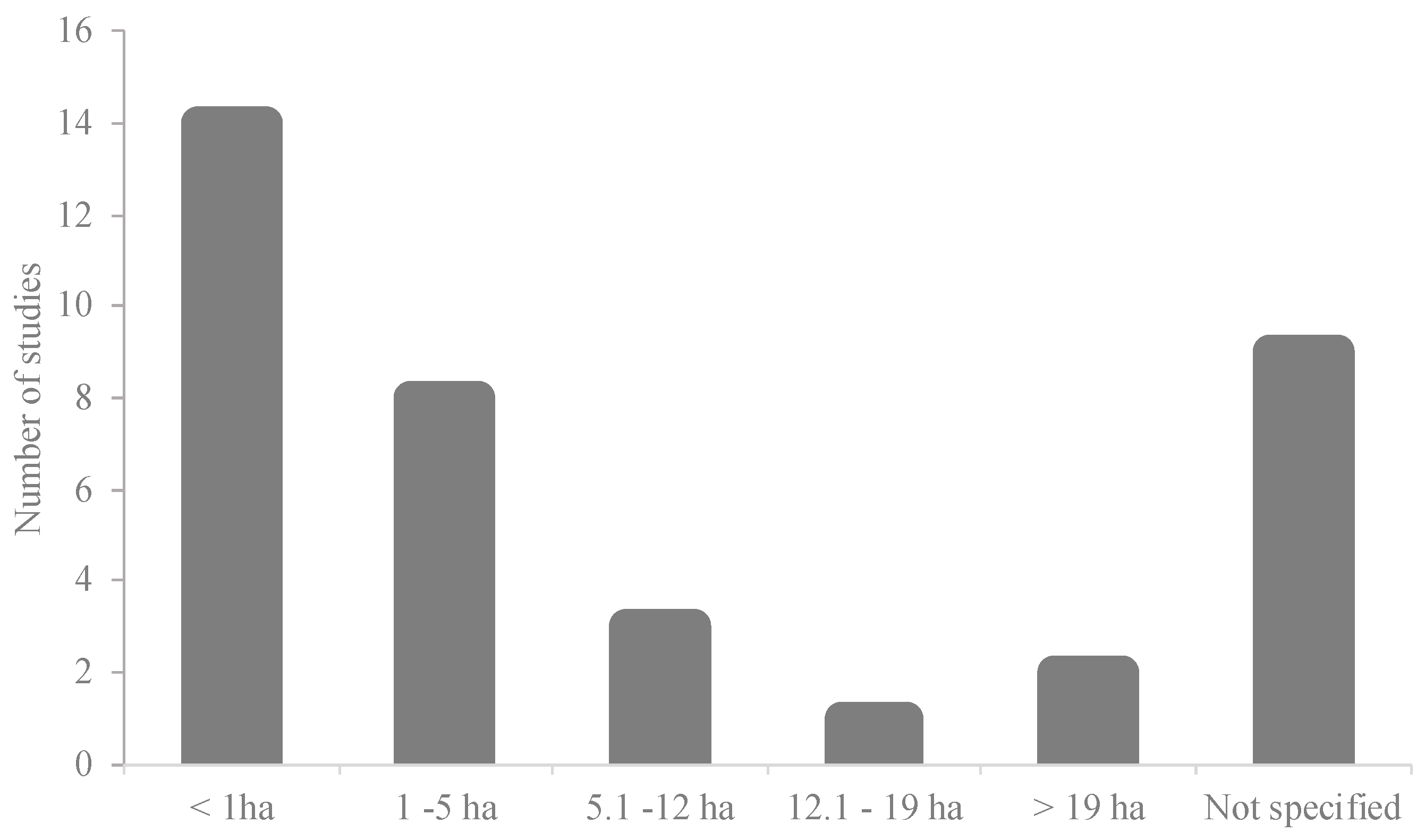
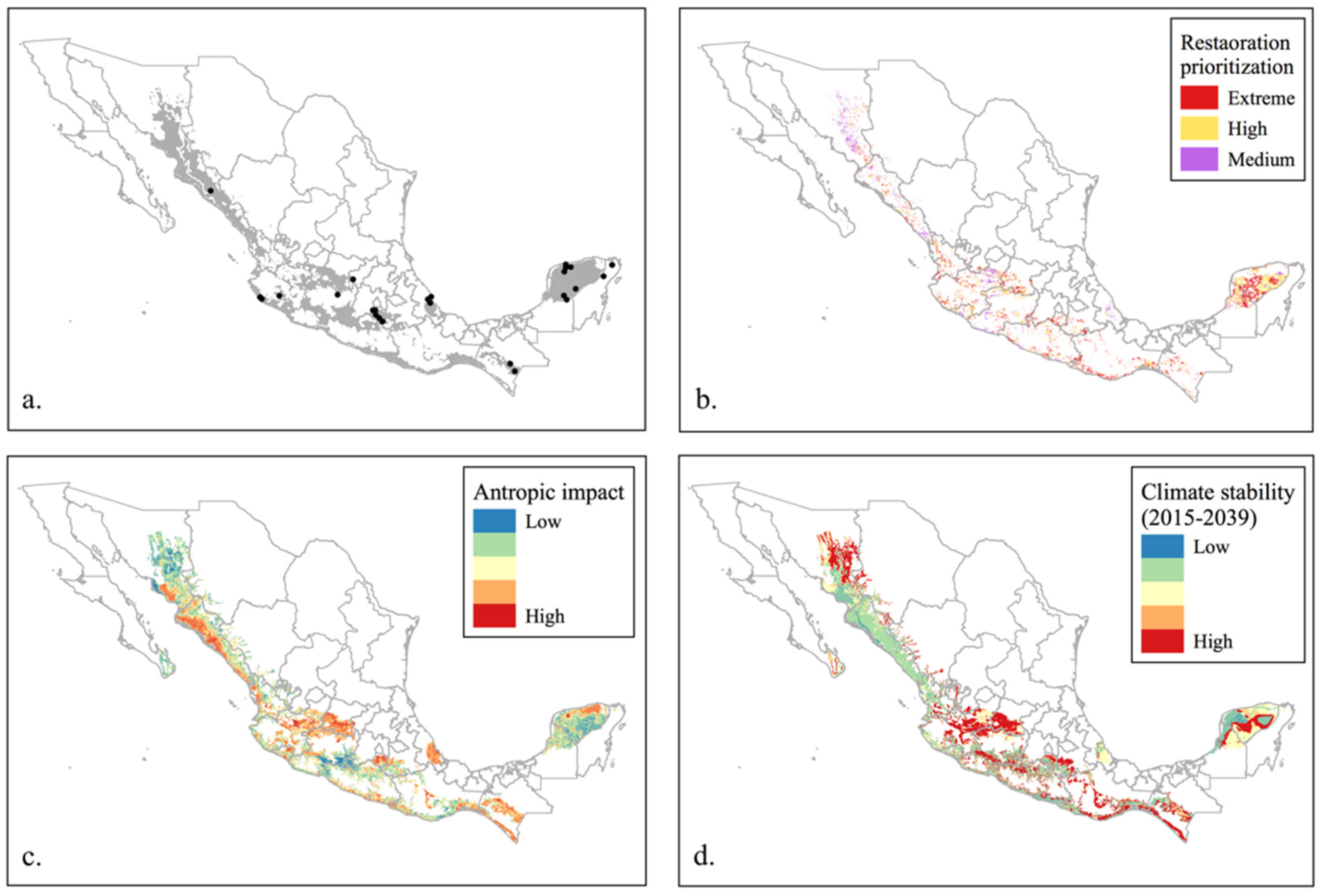
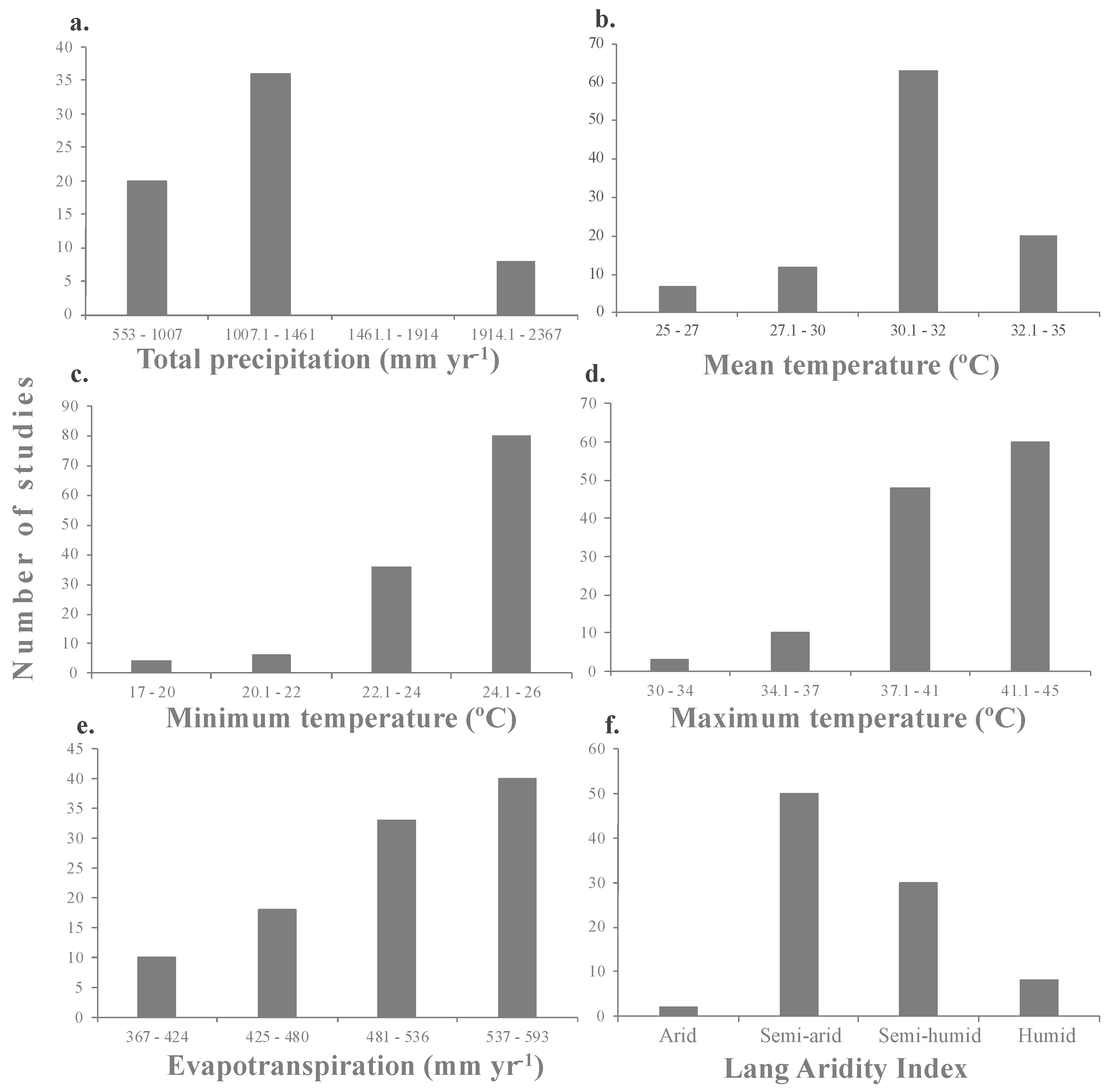

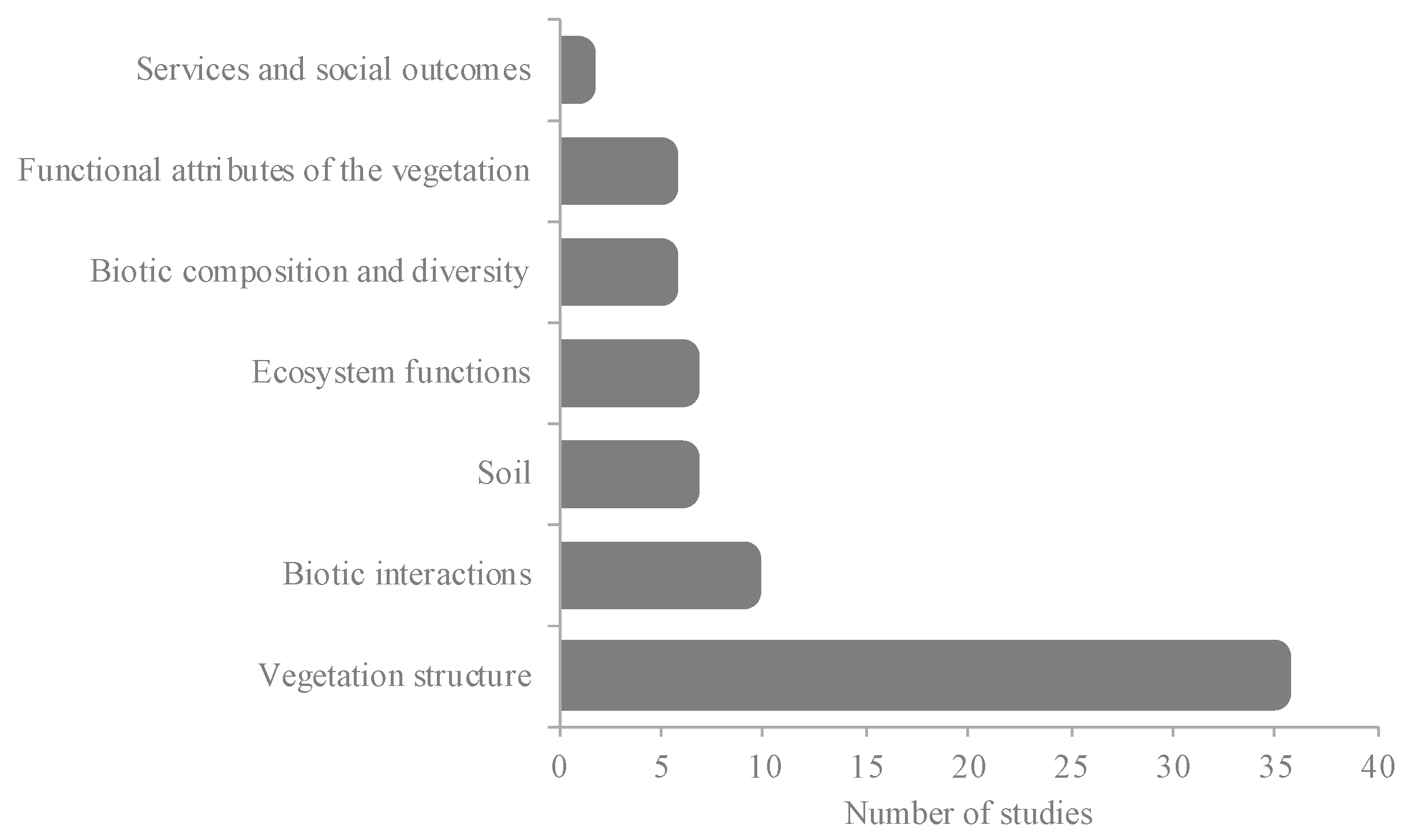
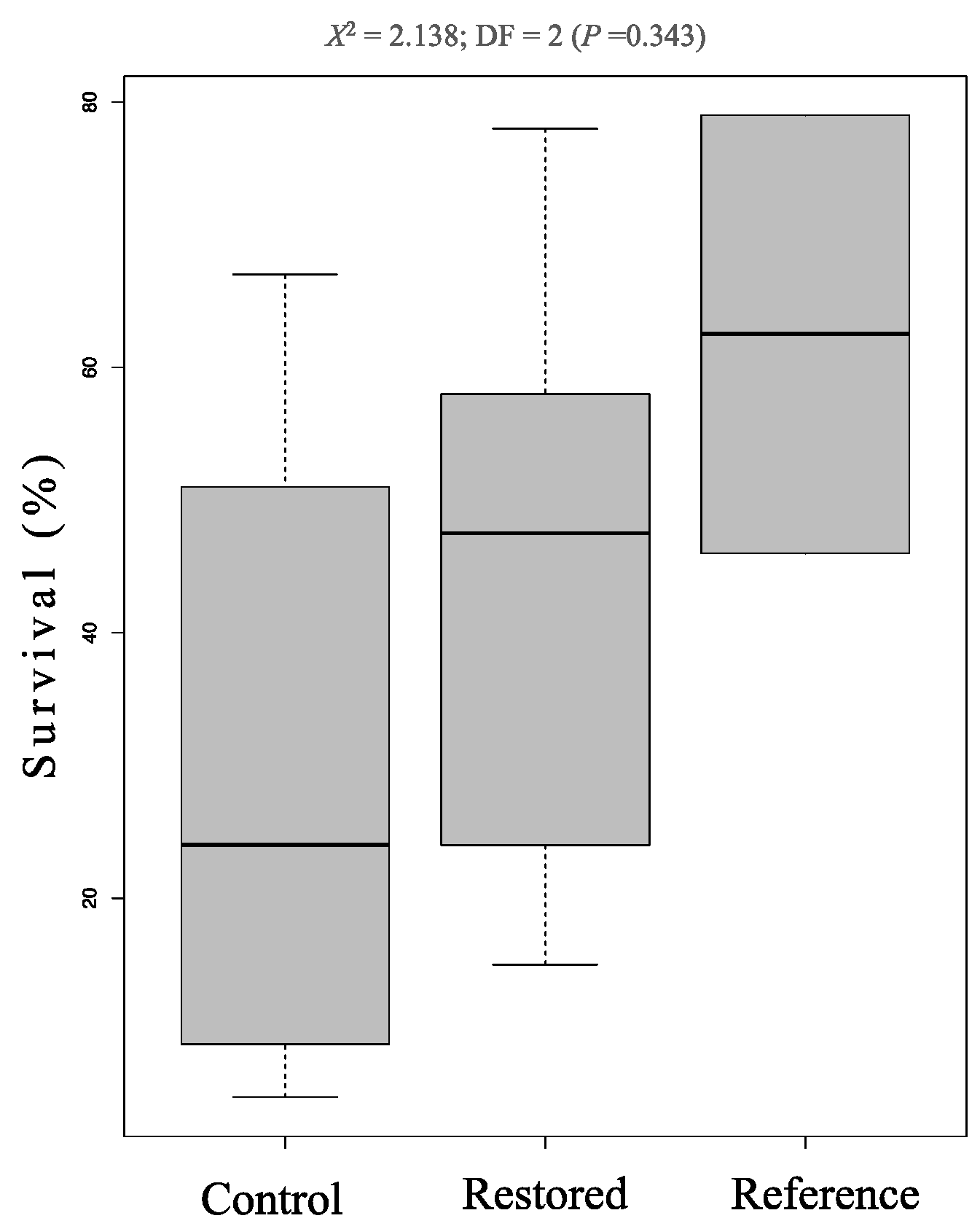

Publisher’s Note: MDPI stays neutral with regard to jurisdictional claims in published maps and institutional affiliations. |
© 2022 by the authors. Licensee MDPI, Basel, Switzerland. This article is an open access article distributed under the terms and conditions of the Creative Commons Attribution (CC BY) license (https://creativecommons.org/licenses/by/4.0/).
Share and Cite
Mesa-Sierra, N.; de la Peña-Domene, M.; Campo, J.; Giardina, C.P. Restoring Mexican Tropical Dry Forests: A National Review. Sustainability 2022, 14, 3937. https://doi.org/10.3390/su14073937
Mesa-Sierra N, de la Peña-Domene M, Campo J, Giardina CP. Restoring Mexican Tropical Dry Forests: A National Review. Sustainability. 2022; 14(7):3937. https://doi.org/10.3390/su14073937
Chicago/Turabian StyleMesa-Sierra, Natalia, Marinés de la Peña-Domene, Julio Campo, and Christian P. Giardina. 2022. "Restoring Mexican Tropical Dry Forests: A National Review" Sustainability 14, no. 7: 3937. https://doi.org/10.3390/su14073937
APA StyleMesa-Sierra, N., de la Peña-Domene, M., Campo, J., & Giardina, C. P. (2022). Restoring Mexican Tropical Dry Forests: A National Review. Sustainability, 14(7), 3937. https://doi.org/10.3390/su14073937





